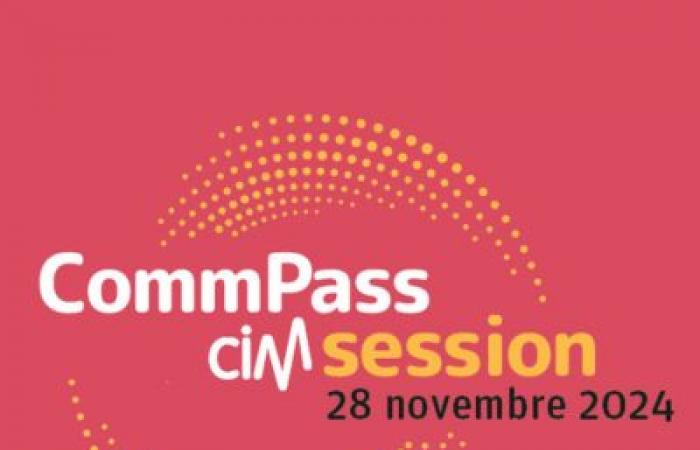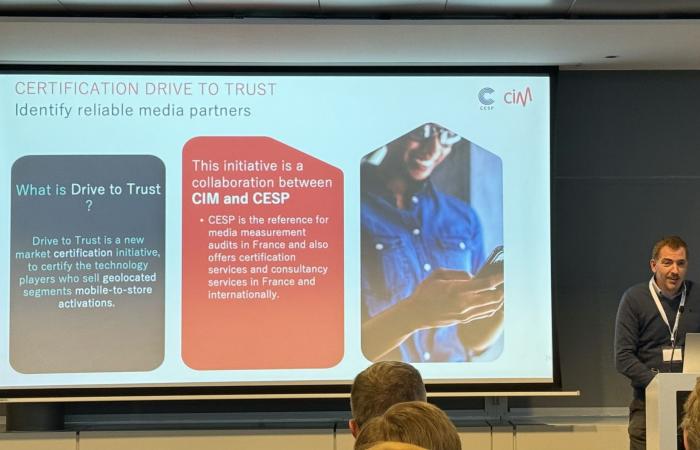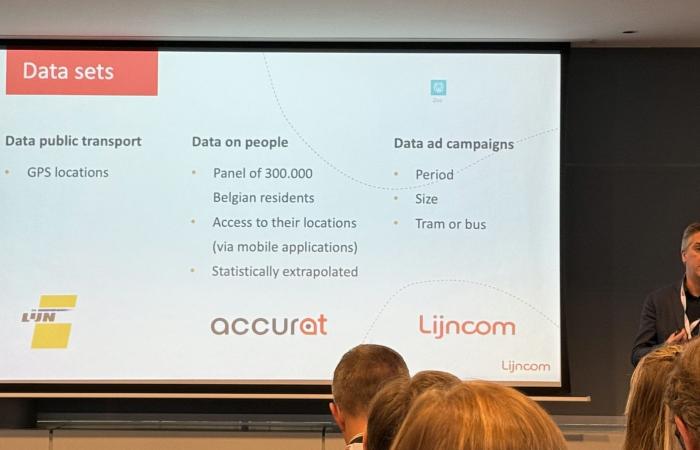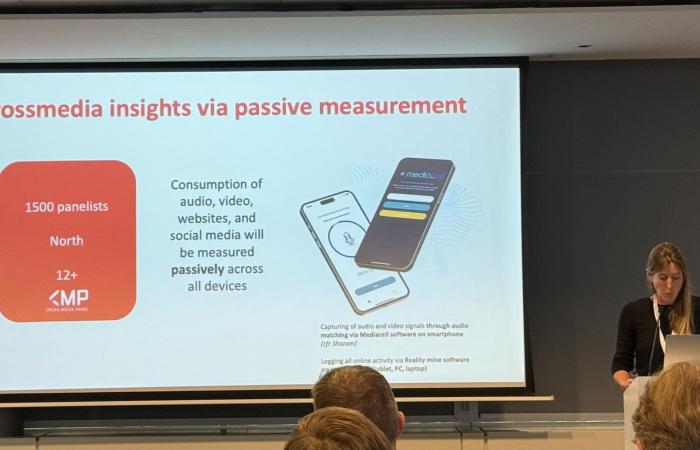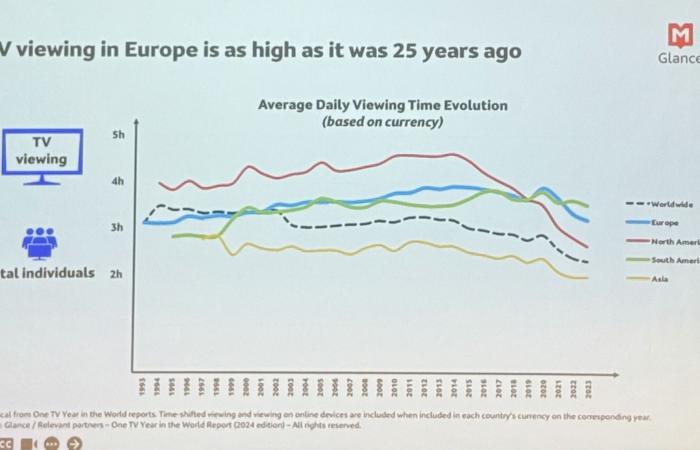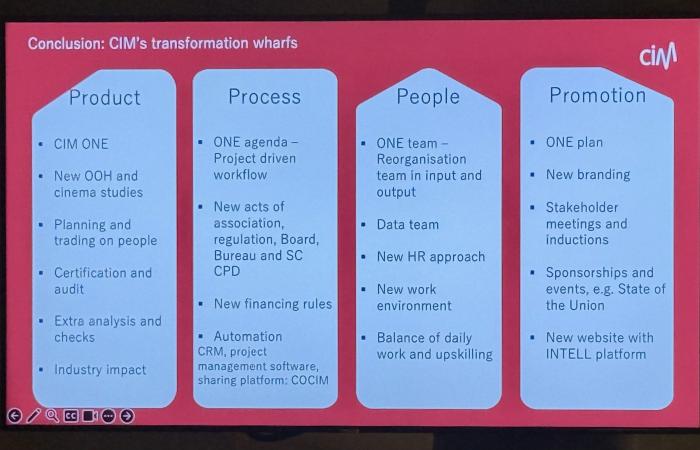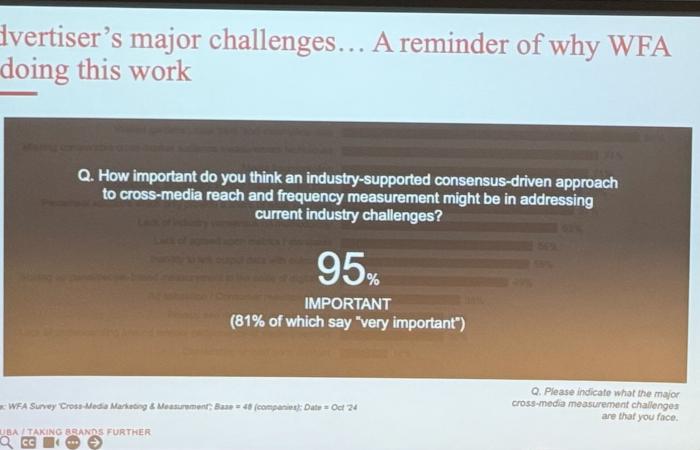November 28, 2024 CIM et CommPass have teamed up to organize an event focusing on the world of advertising and audience measurement. Hosted by Alexander Pope et Christine Bronethis afternoon brought together experts who kept media and advertising industry professionals up to date on the latest ideas and developments in audience measurement.
Joëlle Defossez (CIM) & Lorenzo De Luca (JCDecaux) – CIM News: Going Shopping
Joëlle Defossez et Lorenzo de Luca presented a CIM study on the audience for Out-of-Home (OOH) advertisements, on people’s movements and Wi-Fi sensors. The objective: to better measure the impact of advertising panels, particularly in shopping areas.
The study is based on 188 million weekly trips in Belgium, integrated into a journey map. Sign owners have mapped around 40,000 supports, including in subways and stations. The major innovation is the use of Wi-Fi sensors to measure audiences on digital screens. These sensors anonymously count the passages of people, thus providing precise data on weekly impressions. For example, a screen near a Delhaize generated 34,000 impressions.
A major novelty lies in the study’s ability to associate travel with points of sale. Using JCDecaux Wi-Fi data, the study was able to link journeys to specific stores, providing a better understanding of the impact of advertisements for consumers on the move. These insights help optimize OOH campaign planning.
“We will never know if you spent 3 hours at Carrefour. We only know how many people passed through. » – Joëlle Defossez
Michael Debels (CIM) & Valérie Morrisson (CESP) – CIM News: New Drive-to-Store Certification
Michael Debels et Valerie Morrisson presented the first certification offered by the CIM for mobile solutions Drive-to-Storean initiative launched in collaboration with the CESPa player recognized for its audits in the field of media studies. This certification aims to assess the impact of mobile advertisements targeting consumers near a point of sale, using smartphone geolocation.
Why Drive-to-Store certification?
With the rise of Drive-to-Storewhich allows geolocated advertisements to be sent to consumers on the move, CIM noted a need for transparency and reliability in the measurement of these solutions. In collaboration with the CESP, the certification assesses three main criteria: Right People, Right PLace, Right Performance.
The objective is to offer advertisers a guarantee of data reliability and to distinguish high-performance solutions. This certification strengthens confidence in the market Drive-to-Storein response to concerns regarding the respect of personal data. The project, already tested in France, should be launched at the beginning of 2025 with the publication of the first certified solutions.
“Certification helps guarantee the results that are produced. » – Valérie Morrison
Ben Stallaert (Lijncom) – MAIA: Audience measurement for transit media
The presentations were continued by Ben Stallaert who presented the model MAIA, a new solution developed by Linecom to measure the audience of advertising campaigns in public transport. Before the introduction of this model, Lijncom lacked precise audience data for bus and tram advertisements.
How the Maya Model Works
The MAIA model is based on Big Data analysis, combining three main sources: GPS data from De Lijn vehicles, anonymized location data from 300,000 Belgians via mobile applications, and information on advertising campaigns (formats, duration , vehicles).
It is based on a complex algorithm which follows the following steps:
- Analysis of GPS positions : The algorithm identifies the location of vehicles and cross-references this data with that of nearby individuals.
- Determining visible audience : An audience zone is defined around vehicles to determine which individuals are within sight of the poster.
- Adjustment factors : The algorithm adjusts the results based on several criteria such as the orientation of the poster, the size of the poster, or the CIM visibility standards.
The first analyzes made it possible to extract annual averages for two-week campaigns. In Antwerp, a campaign on 50 trams with a format of 4 m² generates approximately 2.1 million contacts. In Ghent, a similar campaign on 30 trams generates 1.1 million contacts. On buses, a campaign with 50 vehicles generates approximately 1.2 million contacts.
The model MAIA is still in development, and the goal is to refine the analyzes to obtain more precise data and shorter analysis periods. Lijncom also plans to collaborate with CIM to integrate MAIA within a normative framework recognized at the sector level.
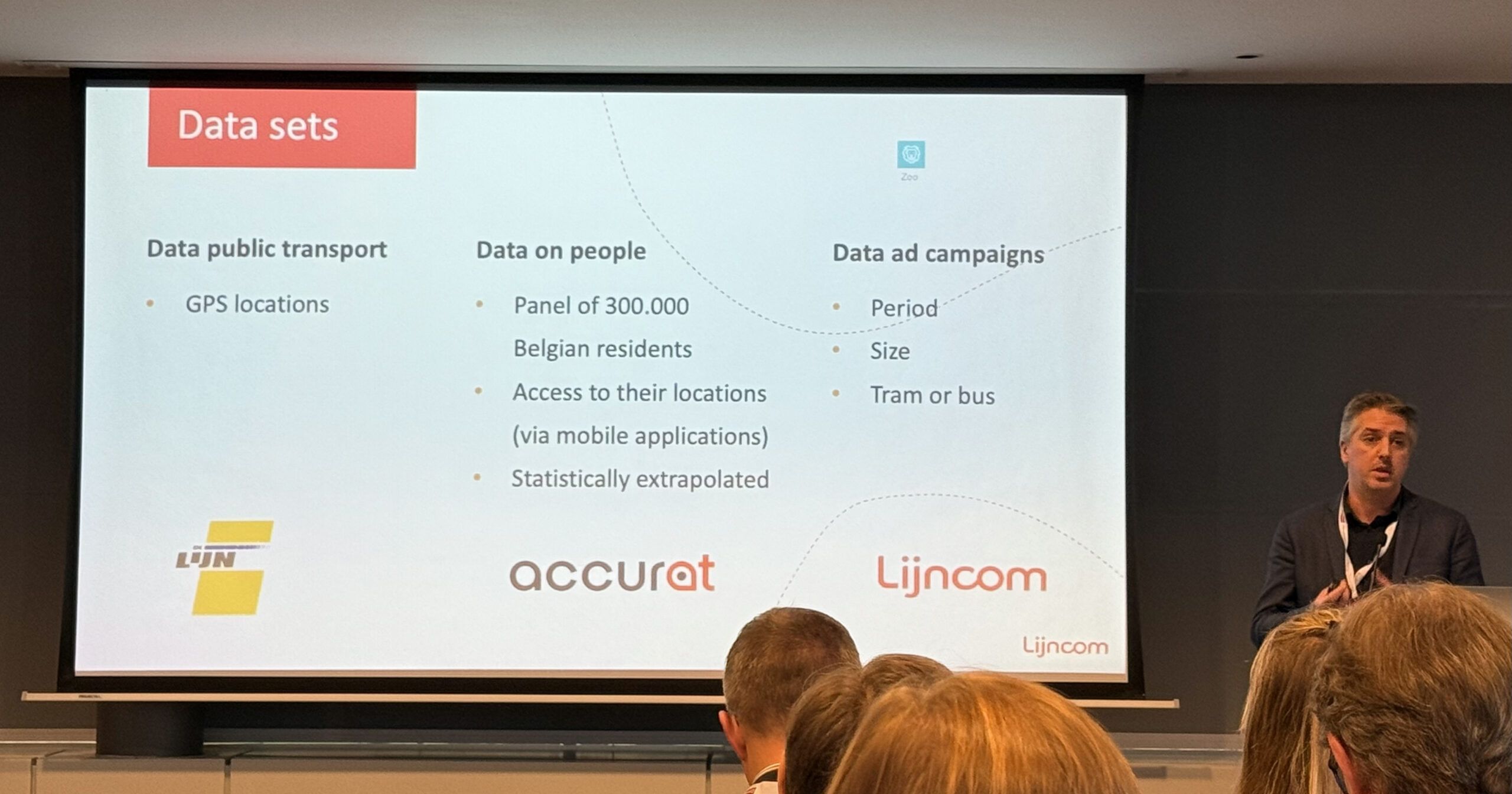
Veerle Hellemans (VAR): The XMM Project, a revolution in measuring media audiences in Belgium
The project XMMlaunched by the Cross Media Consortium (XMC)aims to modernize audience measurement in Belgium in the face of digitalization and the rise of international platforms. With a combined funding of 4 million euros from the Flemish government and 1.7 million euros from local businesses, the initiative relies on a panel of 1,500 Flemish volunteers who will provide ongoing data on their media consumption via mobile applications and audio-matching technologies. This ambitious project, the first data of which will be integrated into the CIM in 2026, promises to transform the way we measure multi-media audiences.
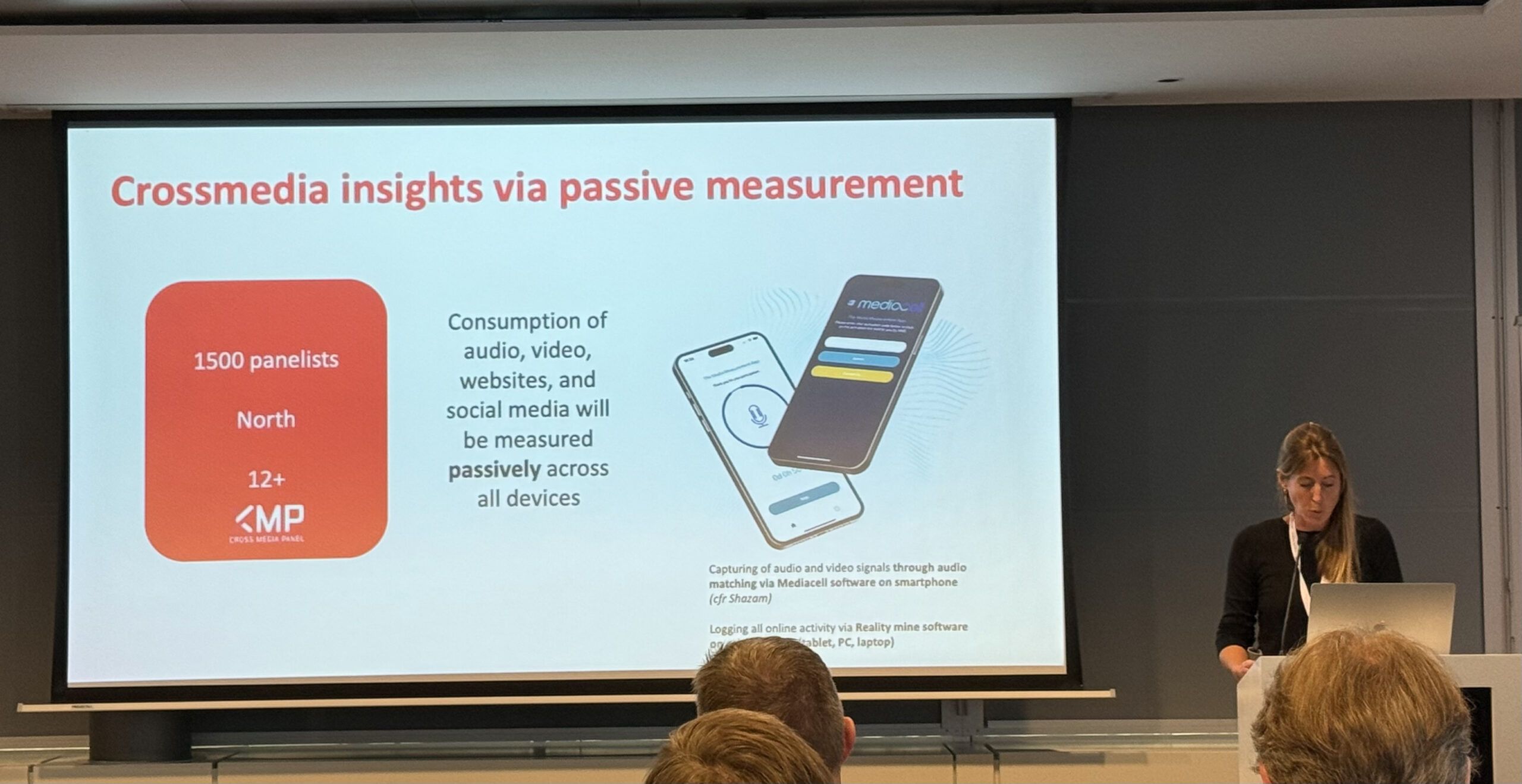
Jeroen Coeymans (Play Media): The evolution of spectator behavior and the impact on audience measurement
Jeroen Coeymans, Business Intelligence Director at Playmediapresents the evolution of spectator behavior and its impact on the collection and analysis of audience data. It highlights the radical change in consumption habits, where the viewer now has total control over what they watch, when they want, and on the platform of their choice. This phenomenon of “Time Shifted Viewing” requires the adoption of new measurement methods, taking into account the different viewing modes (live and delayed) and the importance of “cross-platform” measurement. Jeroen highlights that old methods based on linear delivery are obsolete, and proposes new metrics allowing a more granular and dynamic understanding of audiences.
« The power has truly shifted from the broadcaster to the viewer. » – Jeroen Coeymans
Florent Carême (Glance): Global audience trends and the export of Belgian series
Florent Carême presents an analysis of global trends in TV audiences, highlighting a general decline in television consumption in Europe and North America, although consumption in Europe remains comparable to levels of the 1990s, particularly in southern Europe where live viewing remains important.
He discusses the evolution of TV platforms, such as BBC iPlayerwhich generates more engagement than services like Netflix et Prime Video. Florent also highlights the adaptation of platforms, such as ITVX in the United Kingdom, which attracts a younger audience, illustrating the move to a wider audience and the need to measure consumption live and delayed.
Glance also tracks exports of Belgian series, with unscripted formats like Finders Keepers et Destination Xexported to countries such as France, Germany and Spain. The format Taboo is particularly popular. Finally, he mentions the international success of the series Professor Tadapted in several countries including the United Kingdom, the United States and Germany, demonstrating the growing reach of Belgian series.
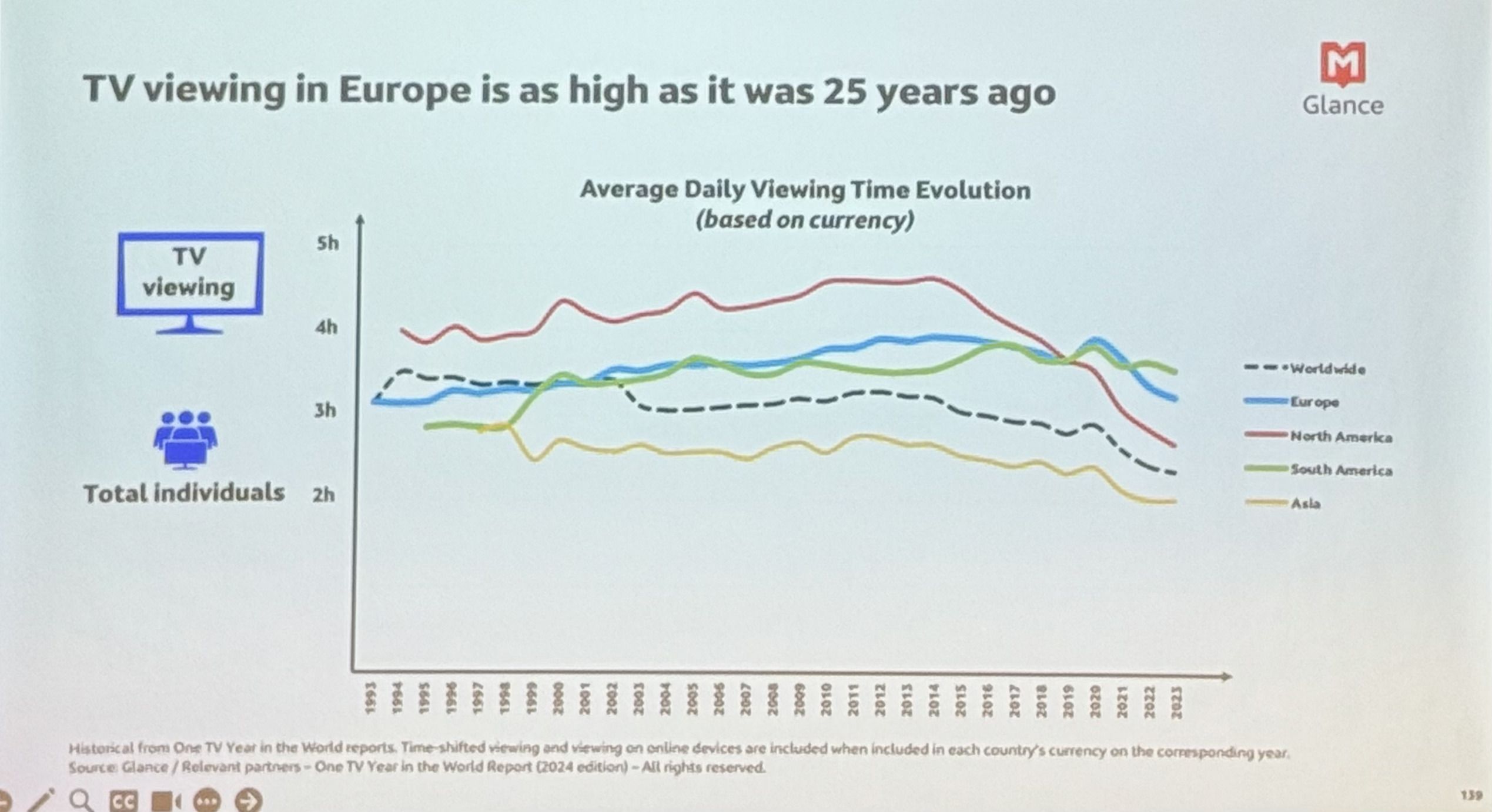
Koenraad Deridder (CIM): The new CIM strategy, one year later
Koenraad presents the evolution of CIM One over the past year, marked by a major strategic change. The approach has moved from « media-centric » has « consumer-centric »aiming to measure all media in a cross-sectional manner, rather than treating them separately. This helps generate more useful data for audience planning and evaluation.
Koenraad also mentions technical advances such as the evaluation of watermarking and the advertising data certification to guarantee their reliability. He underlines the importance of better integrating audience studies into digital business practicesin particular for advertising, and to avoid regulations too strict on the part of public authorities.
Finally, he mentions internal reorganization and process automation to face future challenges.
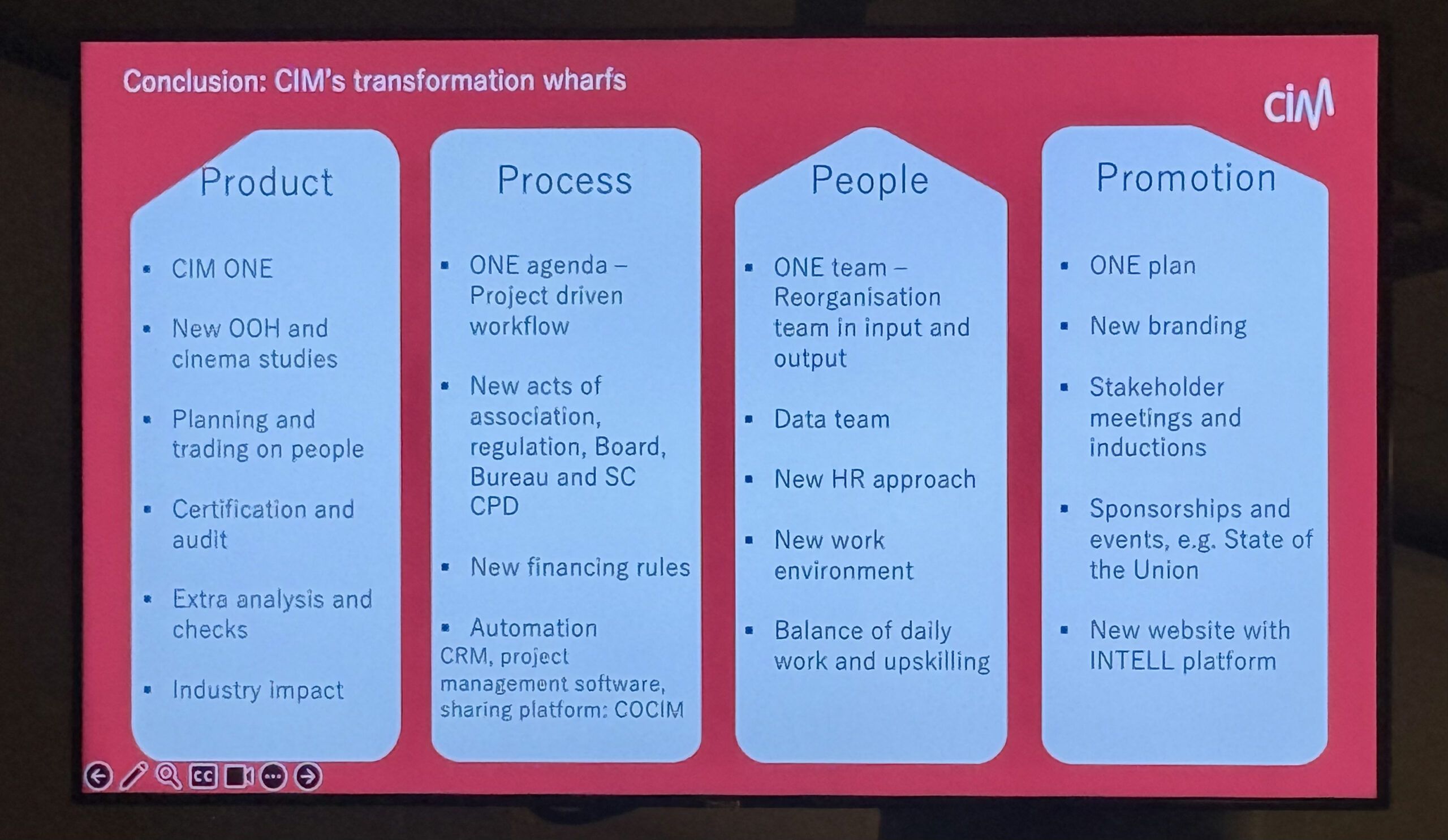
Luc Eeckhout (UBA): The evolution of cross-media studies with the Halo project
Luc closed the day by presenting the project Halo of the World Federation of Advertisers (WFA) to meet the challenges of cross-media measurement. In 2019, the WFA published a white paper on the need to measure the net audiences of media campaigns across all media and platforms, with a particular focus on television, video and digital. The aim is to allow a precise and transparent measurement impressions across all platforms, including digital giants like Google, Meta et TikTok.
The Halo Framework is based on technology that allows us to measure the audience in a way deduplicatedwithout counting the same consumer several times, and thus offers a more precise vision of the blanket and the contact frequency. The objective is to obtain data based on a transparent methodology, allowing advertising campaigns to be optimized while reducing contact redundancy. The project, currently deployed in Beta version in United Kingdomwill be fully operational in 2025. The Halo project is based on a collaboration between advertisers, agencies and platforms.
Luc concludes by emphasizing the importance of this project to improve marketing effectiveness and provide measurement of net reach & frequencyin line with the evolving needs of the advertising market.
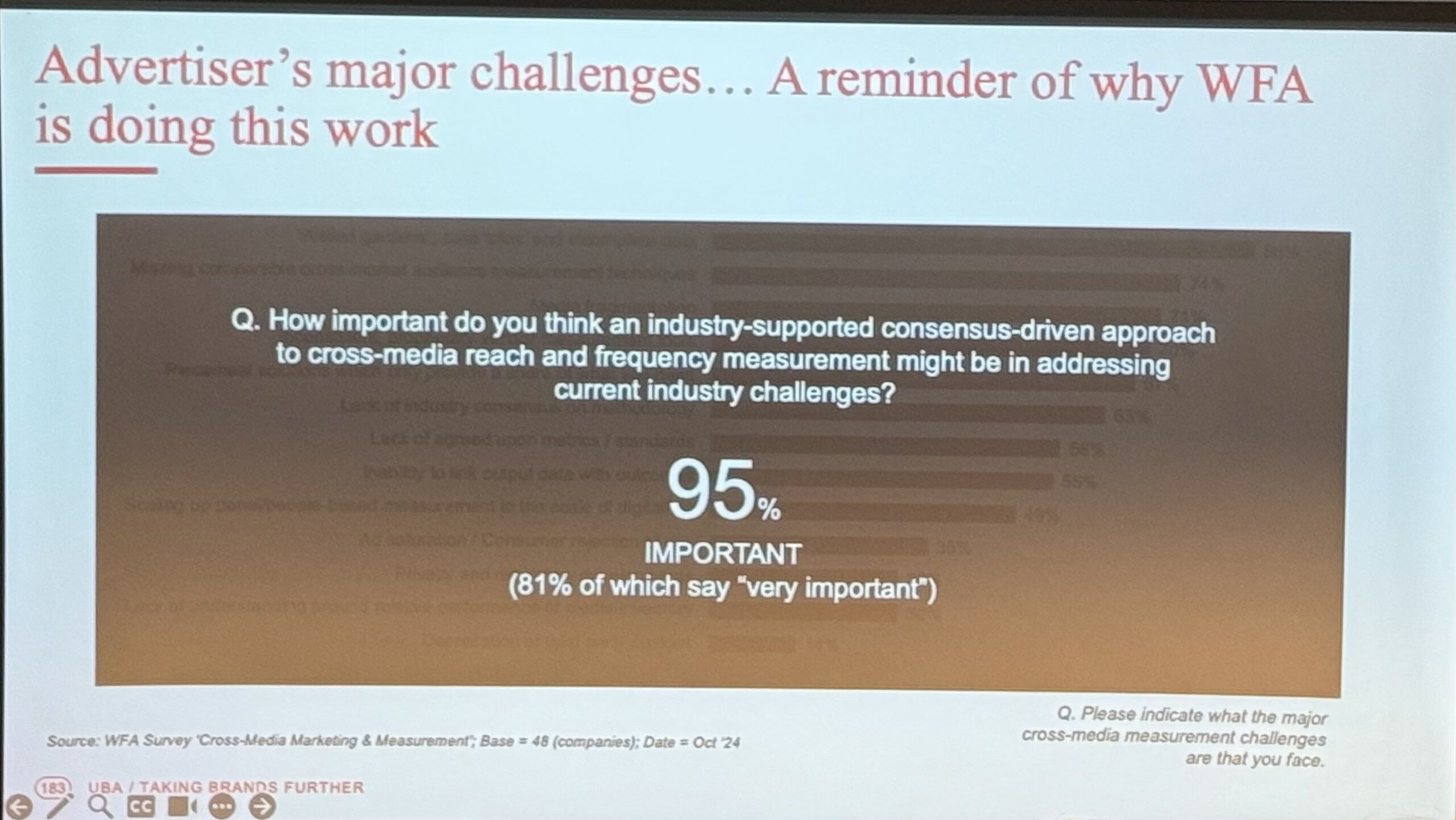
“Halo is not only a magnificent song title by Beyoncé, it is also the entire project, the entire technical part which must carry this cross-media measure. »

